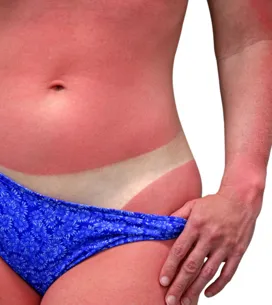How it works
Laser treatment doesn't pull the hair out: it destroys the roots (or hair follicles, more precisely) with laser rays. The wavelength of the laser attacks the hair follicles only, without destroying any of the skin’s structure.
It’s melanin, the pigment responsible for the colour of hair, which absorbs the light produced by the laser, heats up to over 60° and damages the hair follicle so that it produces no more hair.
The procedure
Laser epilation is just about pain-free (you’ll feel a little bit of prickling) and it’s carried out without anaesthesia or hospitalisation.
The area to be epilated is exposed to laser light. Each passing of the laser treats an area of around 2cm², so about a dozen hairs. Both the patient and practitioner should wear protective glasses.
One month before the treatment, waxing, bleaching and using tweezers has to be discontinued. Two days before the session, the area should be shaved so that energy isn’t absorbed by the hair and lost.
The hair doesn’t just disappear in one go, so be prepared for 5 to 10 sessions, depending on your age, sex, skin type, and even hair type. The duration of a session varies from 15 minutes to 4 hours, depending on the area being treated.
Gone for good?
It’s more accurate to describe it as long-term epilation with altered regrowth: less hair grows back and what hair does come back will be finer.
The more sessions you have, the longer the period without hair: from 4 weeks in the beginning to several months, and what’s more and more noticeable is that the hairs which remain are much finer.
What you need to know
- Laser epilation doesn’t work on blond, grey or discoloured hair that doesn’t contain melanin.
- During the initial consultation, the practitioner should establish the number of sessions required, the time gaps between sessions, and the choice of laser.
- It’s recommended that you start off with just a small area in order to measure the effects.
- Laser epilation is generally not covered by the NHS, unless you have excess hair as a result of certain medical conditions.
- Laser epilation is not recommended for black, mixed race or tanned skins because of the risks of depigmentation.
- The treatment leaves no scars.
- Side effects are rare and reversible. At the worst, red spots will appear but will go in 24 hours.
- After laser epilation, exposure to the sun is not advised.
Number of sessions required Time gaps between sessions Price guideFace
Underarms6 sessions2-3 months £80 to £120Upper lip
Chin 6 sessions1 1/2 months to 2 1/2 months£40 to £100Forearms
Abdomen
Back
Legs
Thighs
Bikini line4 sessions2-3 months £200 to £400














